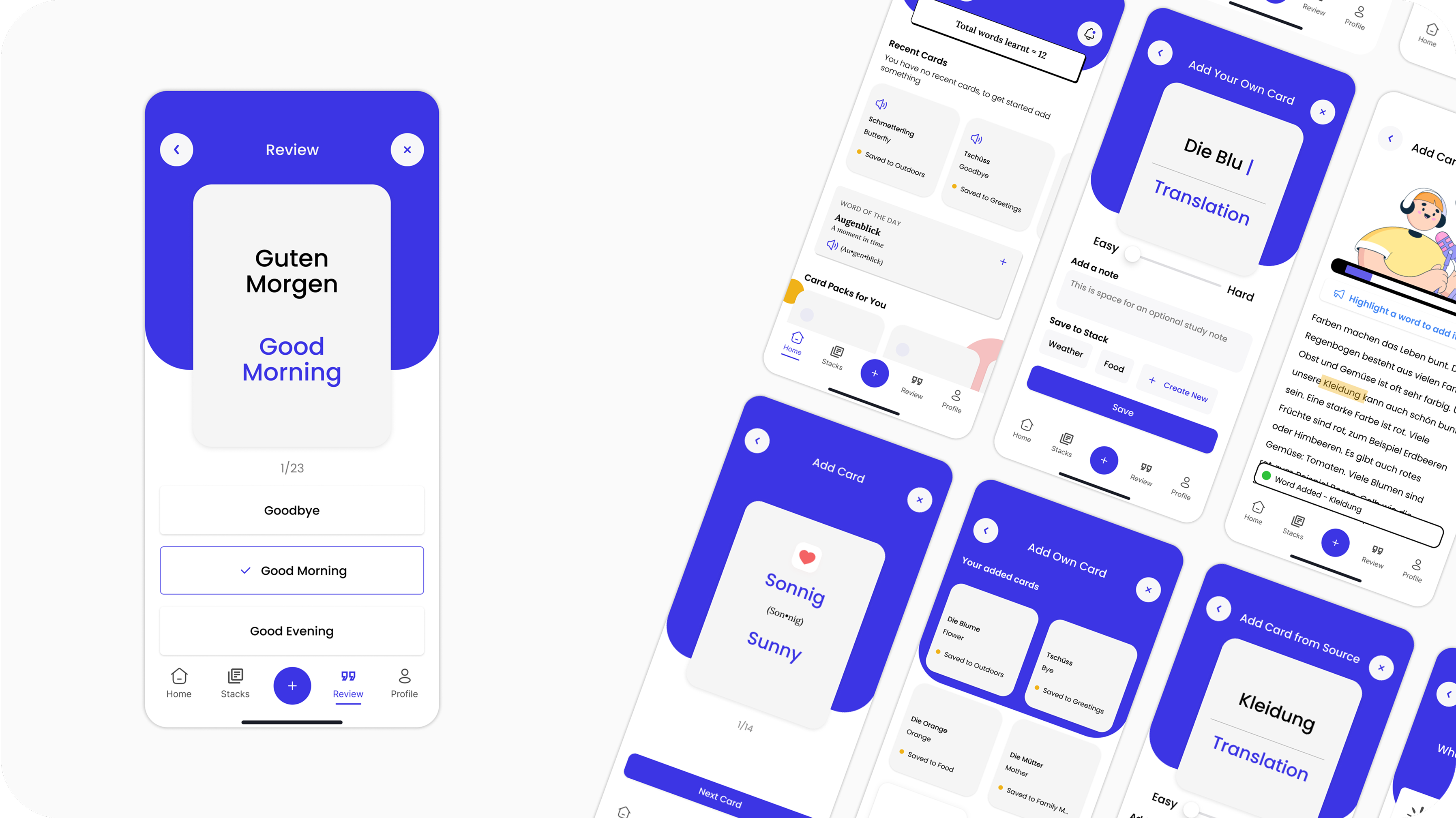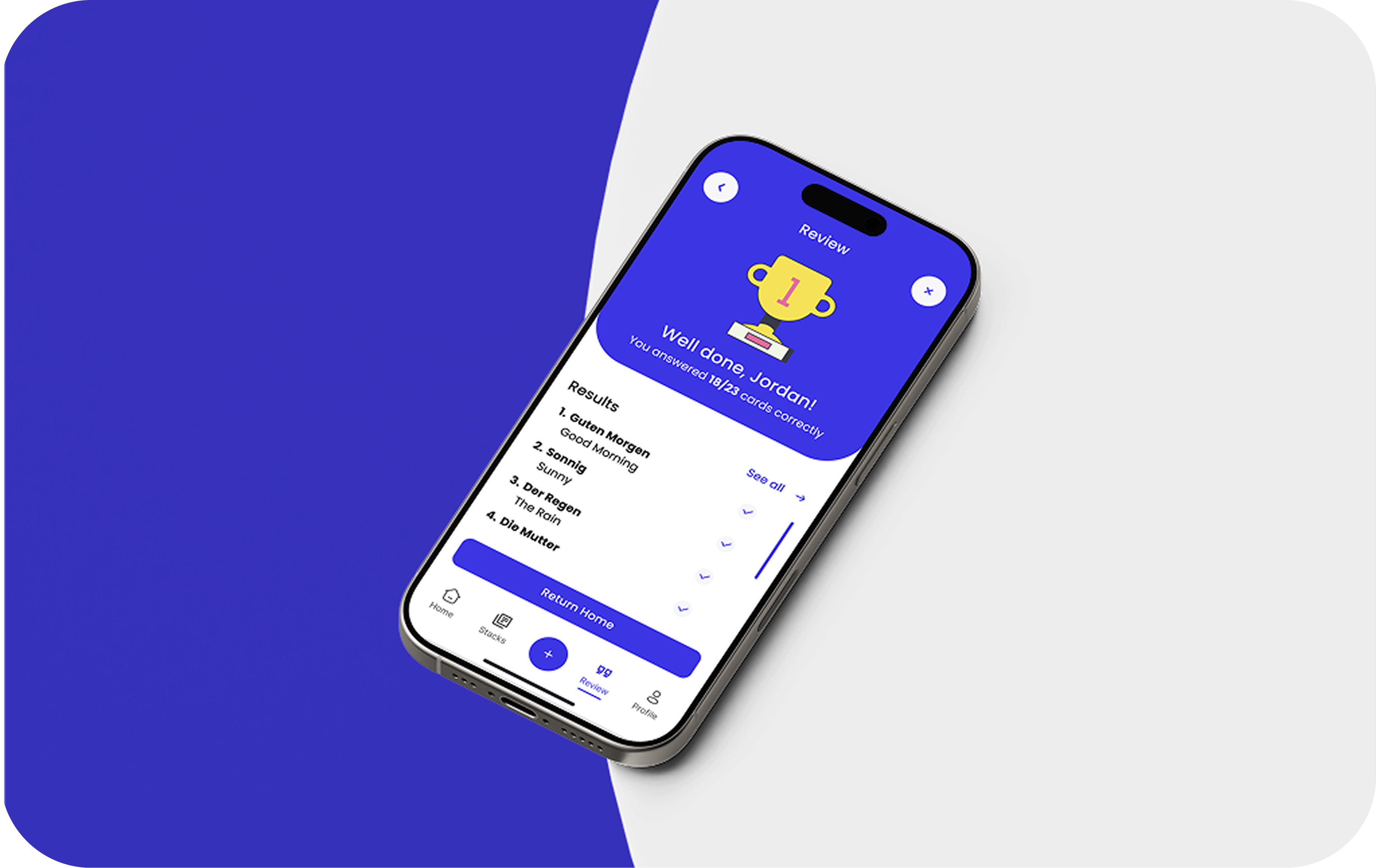Quick Vocab
Learn in a Flash
Why design it?
The Problem
Learners of a new language work on expanding their vocabulary as a key way to learn a language fast. There is an abundance of language learning apps but they often don't allow you to learn words meaningful to your individual situation. People require a way to quickly intuitively create, store and review flash cards.
Hypothesis
An ability to personalize learning would lead to greater engagement and therefore greater success rates when learning a language.
Business Opportunities
This type of application could be used as an “add-on” to help save words from web pages, videos, audio files so that as a user sees a word they don't know and want to learn, they could then save it.
Discovering what users want
"I feel like I am repeating myself with my learning"
— Frustrated User
"I want the confidence to speak to others"
— Nervous learner
"Nothing I learn stays in my memory long enough"
— Forgetful User
People learn in bite sized chunks
When it's not personal, it's not working
Pronunciation is key to building confidence
Learning a language is a social experience
Starting out the Design
User Flows
After completing some competitive analysis, I mapped out some user flows.
Rough sketches
I started by sketching by hand on my ipad as I was unsure of multiple design ideas and didn’t want to focus on just one idea. This allowed me to branch out with my ideas.
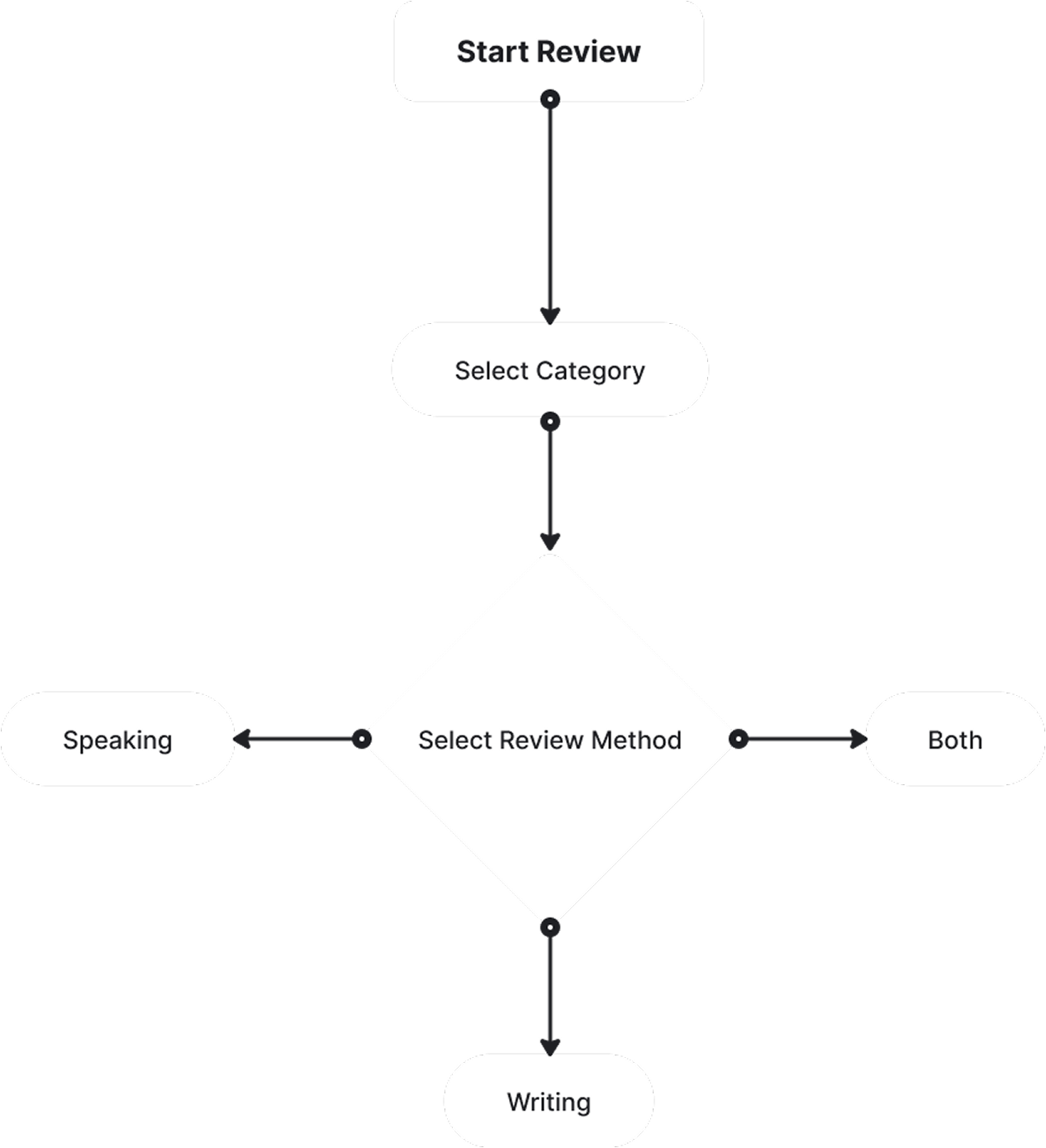
Testing
I imported my sketches and tested with 5 users as an unmoderated test. I chose this method as it was both time effective, and I was able to easily recruit more participants this way.
Challenge in the Design
One main barrier which I faced when progress with design was to keep the level of personalisation high, without ending up with a cluttered and confused user experience.
By creating too much clutter, engagement would drop - but without creating enough personalisation my app would fall into the trap of missing the mark and addressing the problem at its core
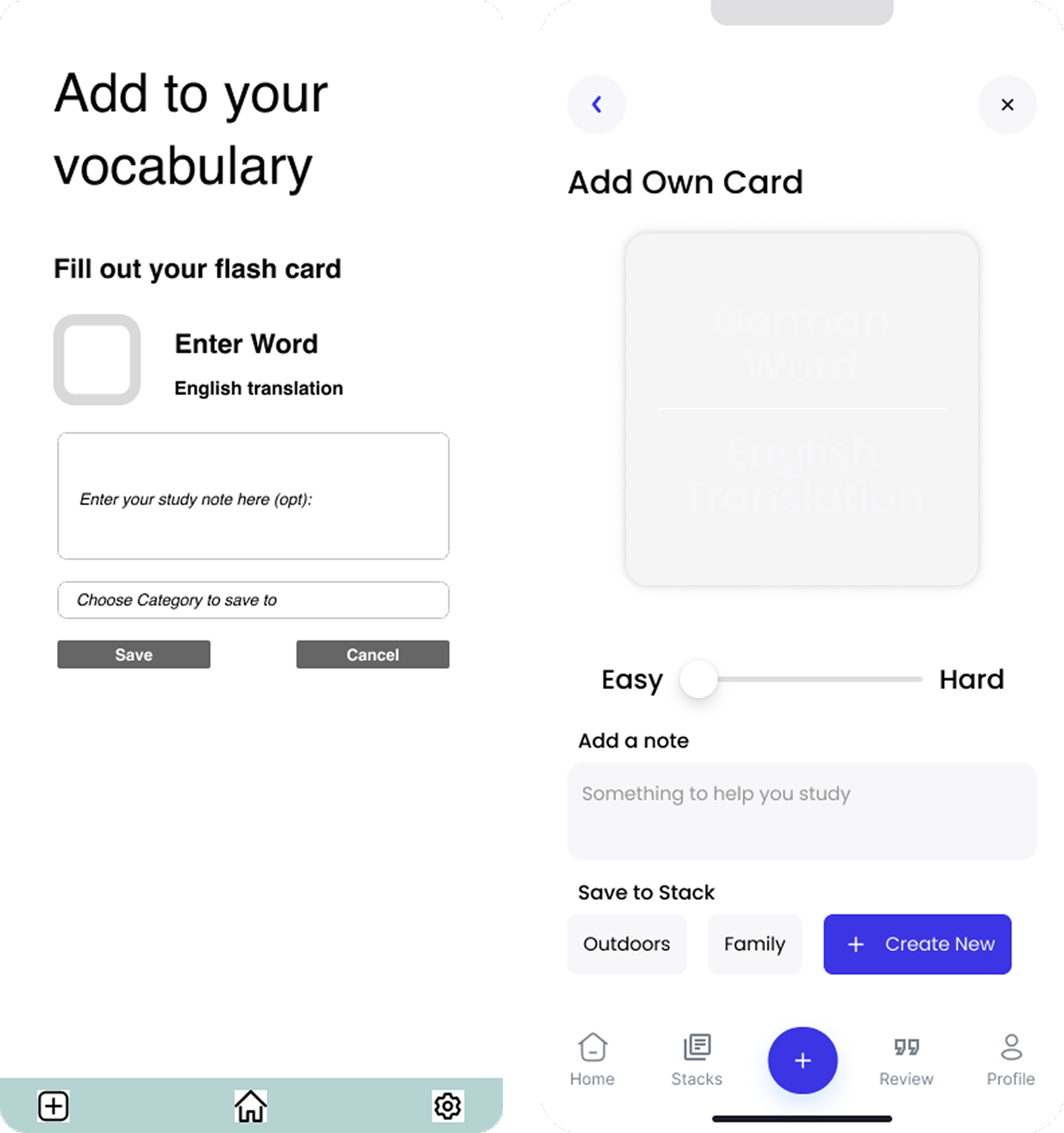
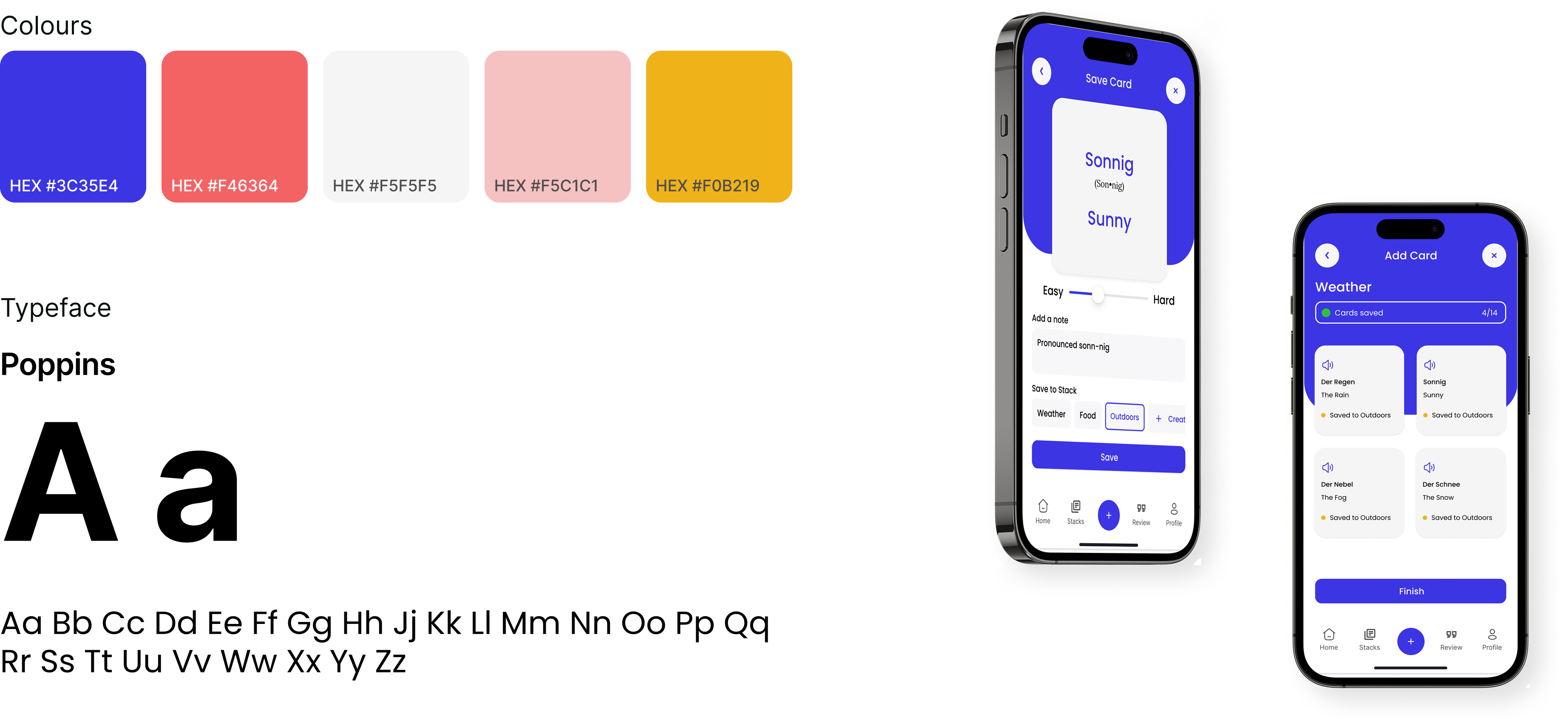
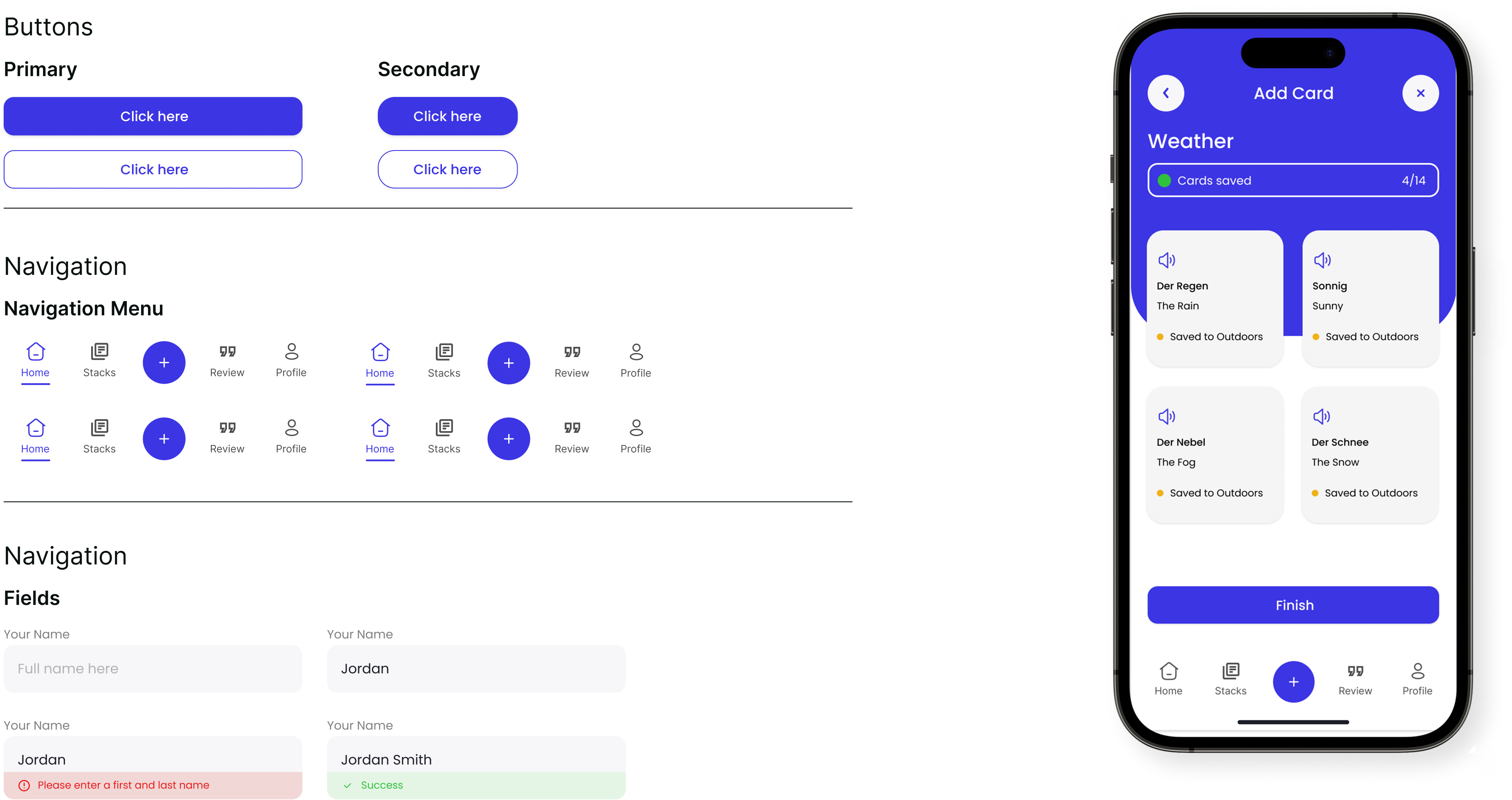
The Finished Product
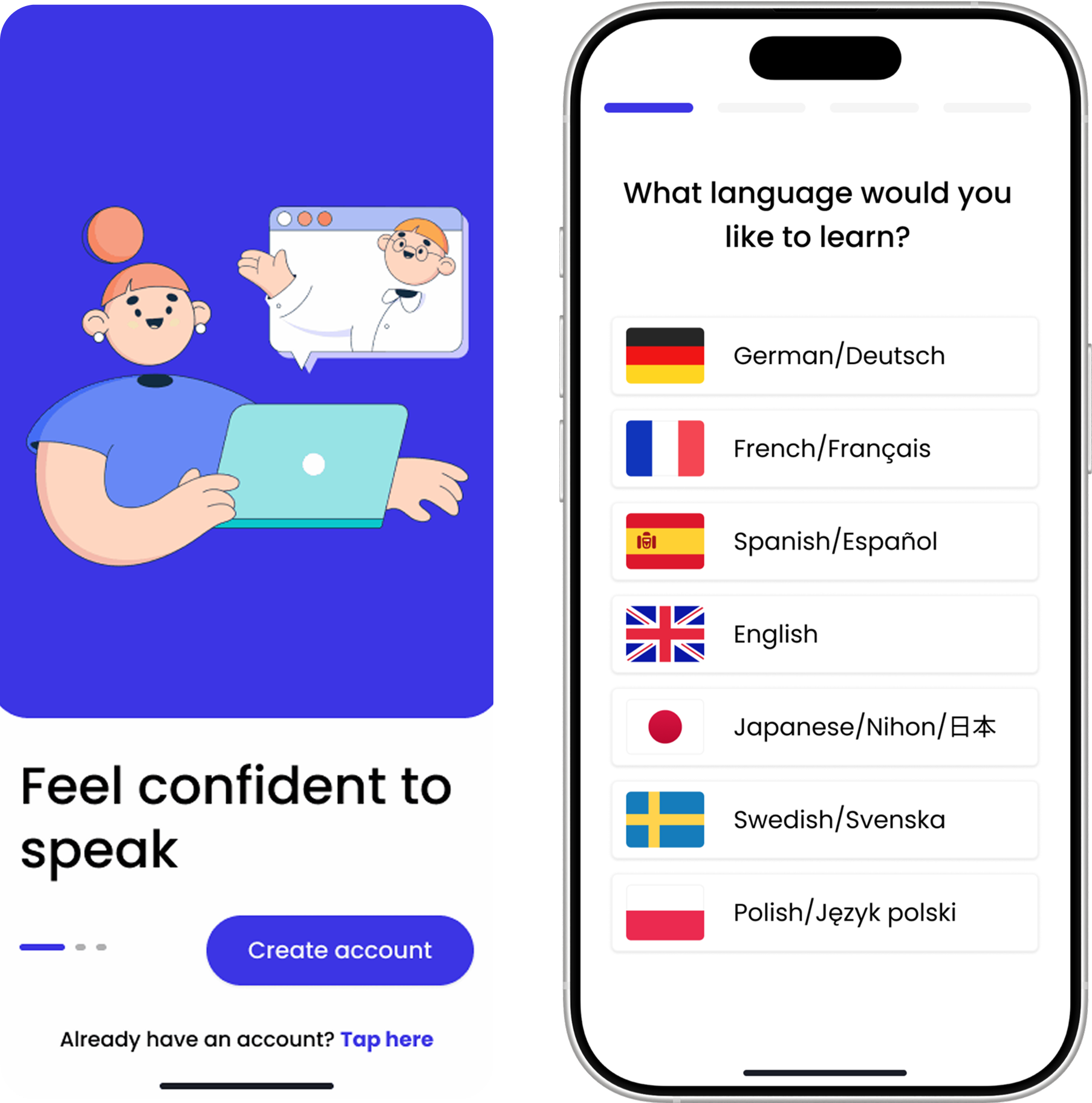
Onboarding
I kept on-boarding short and sweet as my research and initial tests told me people want an app to be personable but not tedious.
Adding a Card
When adding a vocabulary card a user can choose between adding from a pack or adding their own card. Choosing to focus on cards which they find more difficult will help users feel like they are making progress - thereby promoting the learning process.


Reviewing Cards
Reviews can be done by only focusing on the “tricky” cards, and users can choose to review specific categories or a mix. Choice is given to users to practice some or all of the cards they have saved based on their time constraints.
Lessons Learnt
I learnt a lot from this project, including the importance of keeping visual clutter to a minimum and utilising white space in keeping an interface clean and easy to digest for the user.
I was able to meet and develop each feature and plan to take these to another round of testing.
After this I will continue to iterate on my application and work on a web app version which I will then collaborate with a software engineer to work towards development - so stay tuned!.
